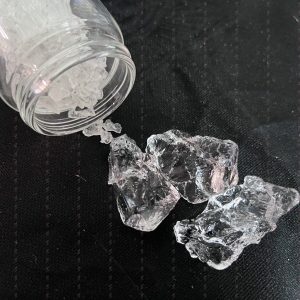البوليمرات فائقة الامتصاص (SAP) هي مواد قادرة على امتصاص ما يصل إلى 300 مرة من وزنها في السوائل المائية. بمجرد امتصاصها، فإنها تحتفظ بالسائل دون إطلاقه. هذه الخاصية تجعلها مناسبة للغاية للمنتجات المصممة لإدارة السوائل، مثل حفاضات الأطفال ومنتجات سلس البول والفوط الصحية النسائية وبطاناتها.

Most SAPs are composed of sodium polyacrylate and are available in granular or fiber form. The granular material consists of millions of identical units of sodium acrylate arranged in a chain-like structure, which are then interconnected to form a three-dimensional network. In their dry state, the long polymer chains are coiled. Upon absorbing liquid, they uncoil, causing the network to expand. The liquid is stored within the molecular network, forming a gel that effectively traps the liquid.
The Benefits of Superabsorbent Polymers:
- Skin Dryness: SAPs draw liquid away from the skin, keeping it dry and enhancing user comfort.
- Skin Irritation Prevention: By reducing skin wetness, SAPs help prevent skin irritation, particularly in diaper users where prolonged wetness can lead to skin issues.
- Infection Control: SAPs contain fluids, reducing leakage and the risk of contamination, thus aiding in preventing infections like diarrhoea and gastroenteritis.
- Improved Quality of Life: For individuals with bladder or bowel control issues, SAP-containing products provide greater mobility and independence, enhancing their quality of life.
Safety of Superabsorbent Polymers: Extensively tested and researched, SAPs are deemed safe for use in absorbent hygiene products. Experts in toxicology, general medicine, nursing, and paediatrics have reviewed the research, confirming the safety and benefits of SAPs.
Manufacturing Process of Superabsorbent Polymers: The main ingredients include acrylic acid, sodium hydroxide (or a similar neutralizing agent), water, and a cross-linker that connects polymer chains. These components undergo a polymerization process to form the three-dimensional polymer networks, appearing as an aqueous gel. Granulation and sieving yield the desired particle size, and further cross-linking can be done to tailor the material’s absorbency characteristics.

